Introduction – 9 Top Benefits of Ustrasana | How to Perform Ustrasana – A Step-By-Step Instructions of Camel Pose
Ustrasana, commonly known as Camel Pose, is a dynamic and heart-opening yoga posture that embodies grace, strength, and flexibility. The name “Ustrasana” is derived from the Sanskrit words “ustra,” meaning camel, and “asana,” representing a yoga pose or posture. This asana is characterized by a deep backbend, where practitioners arch their spine, reaching for their heels with their hands. As a backbend, Ustrasana encourages practitioners to embrace vulnerability and cultivate a sense of heart-centered openness.
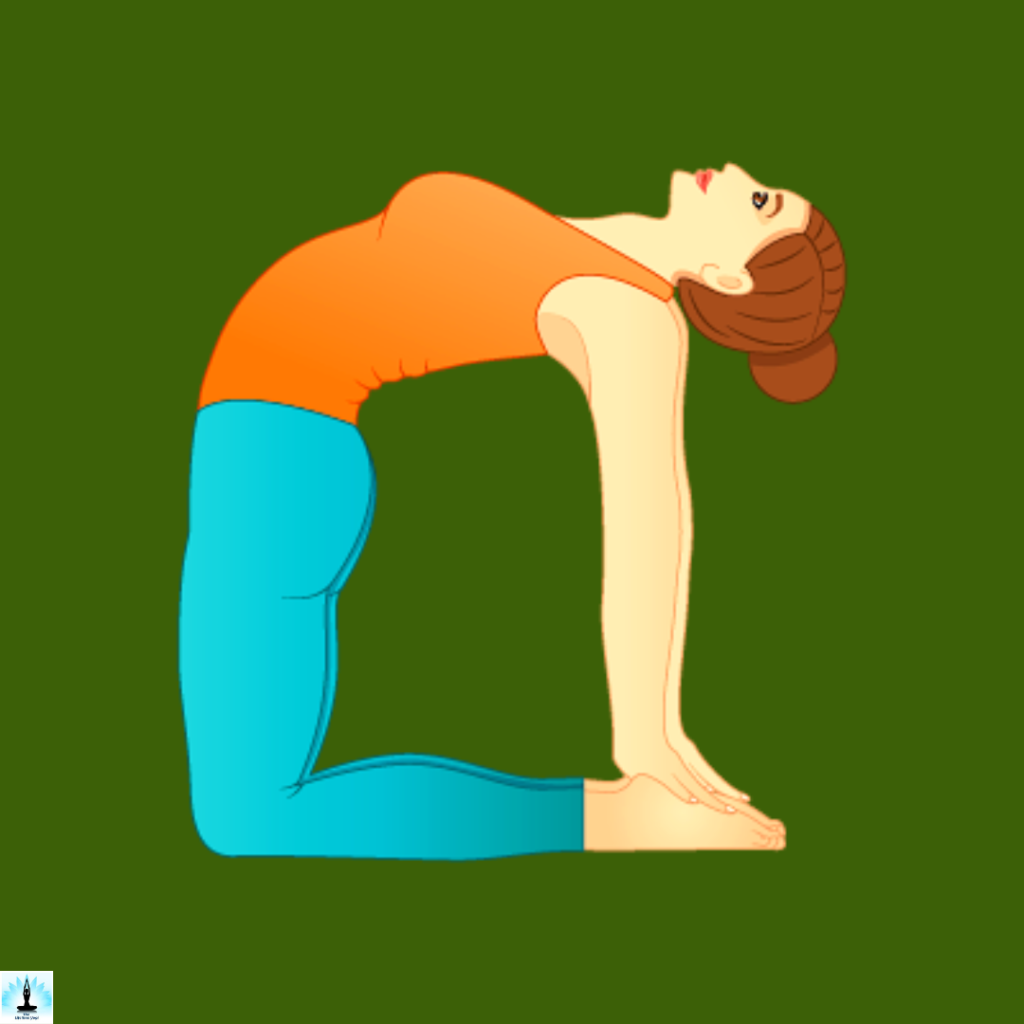
Table of Contents
The Yogic Philosophy of The Ustrasana (Camel Pose)
In the realm of yogic philosophy, Ustrasana, or Camel Pose, holds symbolic significance beyond its physical manifestation. The posture, with its profound backbend and heart-opening quality, is seen as a pathway to unlocking and expressing deep emotional energies stored within the heart center. Ustrasana, by stretching and expanding the front of the body, is believed to activate and harmonize the energy flow through the heart chakra.
Which Chakra is Activated by Practicing Ustrasana (Camel Pose)?
Ustrasana, or Camel Pose, is closely associated with the activation of the Anahata Chakra, also known as the Heart Chakra. The deep backbend of Ustrasana opens the chest and stretches the front of the body, creating a powerful expansion in the heart center.
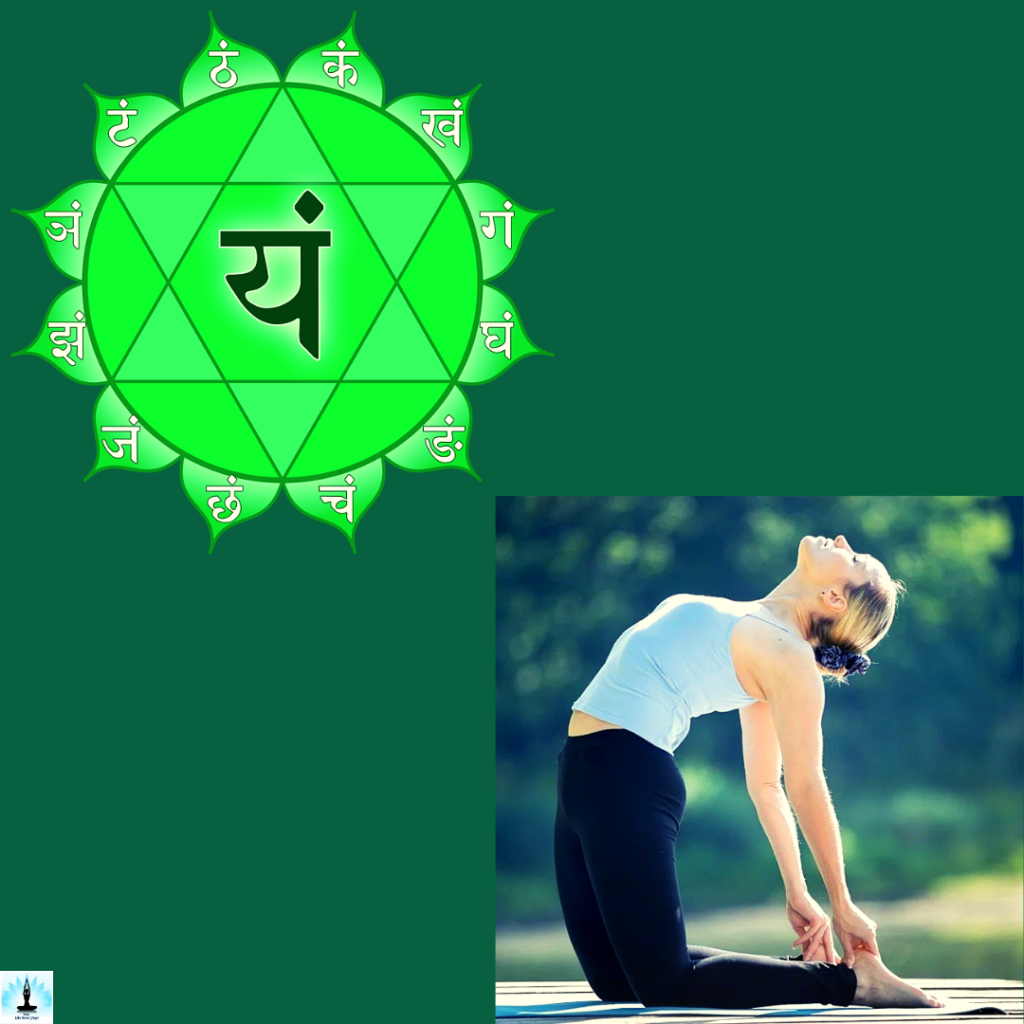
As the chest lifts and the heart opens, energy is believed to flow more freely through the Anahata Chakra. The activation of this chakra during the practice of Ustrasana bring emotional balance, foster self-love, and enhance one’s capacity for compassion towards oneself and others.
Top Benefits of Ustrasana (Camel Pose)
- Heart Opening: Ustrasana deeply stretches the front of the body, opening the chest and promoting a heart-expanding sensation.
- Activates the Anahata Chakra: The pose is associated with the activation of the Heart Chakra, fostering emotional balance, love, and compassion.
- Improves Posture: Regular practice of Ustrasana helps to correct posture by strengthening the muscles of the back and shoulders.
- Strengthens Back Muscles: The backbend engages and strengthens the muscles along the spine, contributing to a healthier and more resilient back.
- Stretches the Front Body: Ustrasana stretches the front of the body, including the abdomen, thighs, and hip flexors, enhancing flexibility.
- Stimulates Digestive Organs: The compression and stretching involved in the pose stimulate the organs in the abdominal region, potentially aiding digestion.
- Enhances Lung Capacity: The open chest and expanded ribcage in Ustrasana encourage deep breathing, increasing lung capacity.
- Alleviates Mild Back Pain: When practiced with proper alignment, Ustrasana can alleviate mild back pain by strengthening the muscles that support the spine.
- Counteracts Rounded Shoulders: The chest-opening aspect of Ustrasana helps counteract the effects of rounded shoulders, common in those who spend extended periods sitting.
How to Perform Ustrasana? | Step-by-Step Instructions of Ustrasana (Camel Pose)
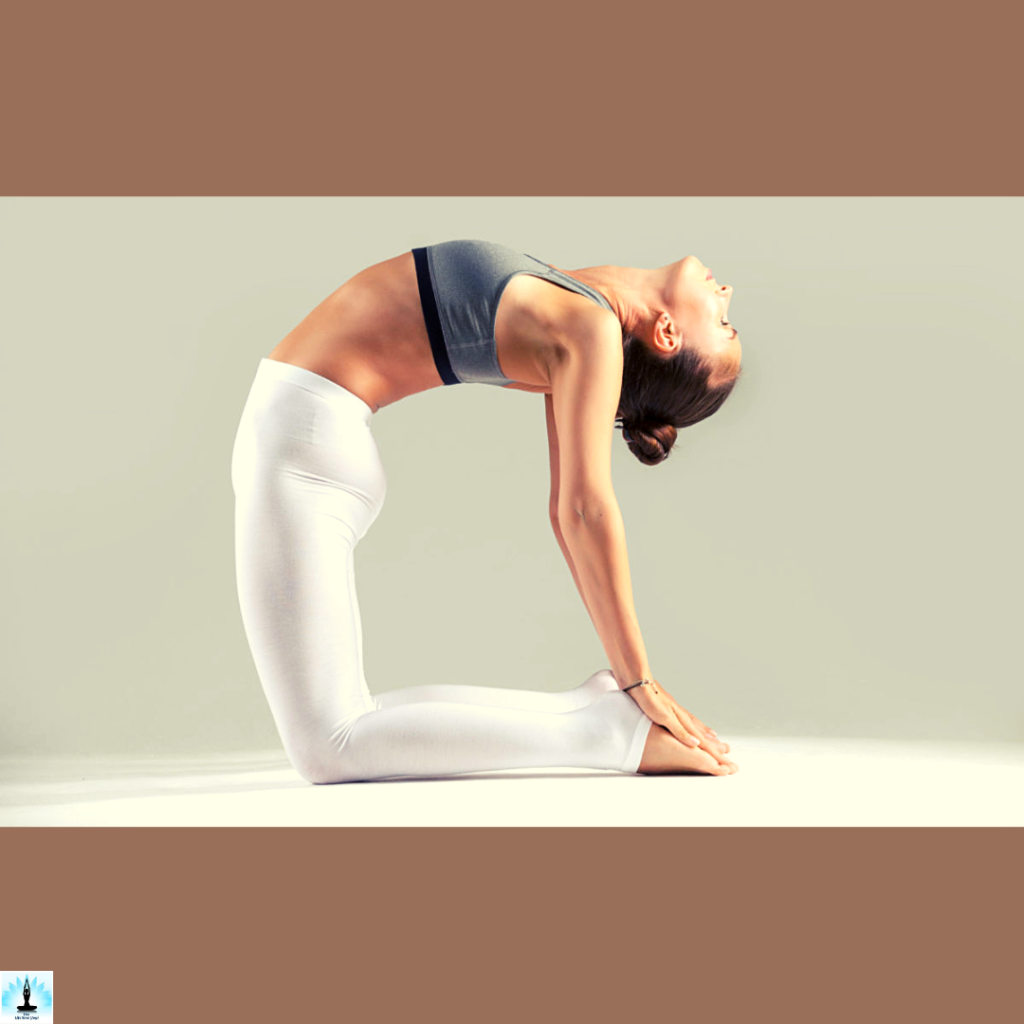
Follow these step-by-step instructions to practice Ustrasana (Camel Pose):
Start in a Kneeling Position:
Begin by kneeling on the mat with your knees hip-width apart. Ensure your thighs are perpendicular to the floor.
Align Your Hips:
Align your hips directly over your knees, and place your hands on your hips for support.
Engage Your Core:
Engage your core muscles by drawing your navel toward your spine. This helps stabilize your lower back.
Lengthen Your Tailbone:
Lengthen your tailbone down toward the floor, avoiding excessive arching in the lower back.
Begin the Backbend:
Inhale and begin the backbend by reaching your right hand back to your right heel. Follow with your left hand reaching toward your left heel.
Grip Your Heels:
Once you’re comfortable, reach both hands back to grip your heels. If reaching the heels is challenging, keep your hands on your lower back for support.
Open Your Chest:
Lift your chest towards the ceiling, creating a deep arch in your upper back. Keep your shoulders relaxed away from your ears.
Tilt Your Head Back (Optional):
If comfortable, tilt your head back and allow it to drop, extending your neck. Keep breathing steadily.
Hold the Pose:
Hold Ustrasana for 20-30 seconds, gradually increasing the duration as your flexibility and comfort in the pose improve.
Exit the Pose Safely:
To come out of the pose, bring your hands back to your hips for support. Slowly lower your torso down, and sit back on your heels to rest.
Rest in Child’s Pose:
Counterpose the backbend by resting in Child’s Pose (Balasana) for a few breaths, allowing your spine to neutralize.
Advance Variations of Ustrasana (Camel Pose)
These advanced variations of Ustrasana require a solid foundation in the basic pose, along with a gradual progression to ensure safety and proper alignment.
Dwi Pada Viparita Dandasana (Two-Legged Inverted Staff Pose) Variation:
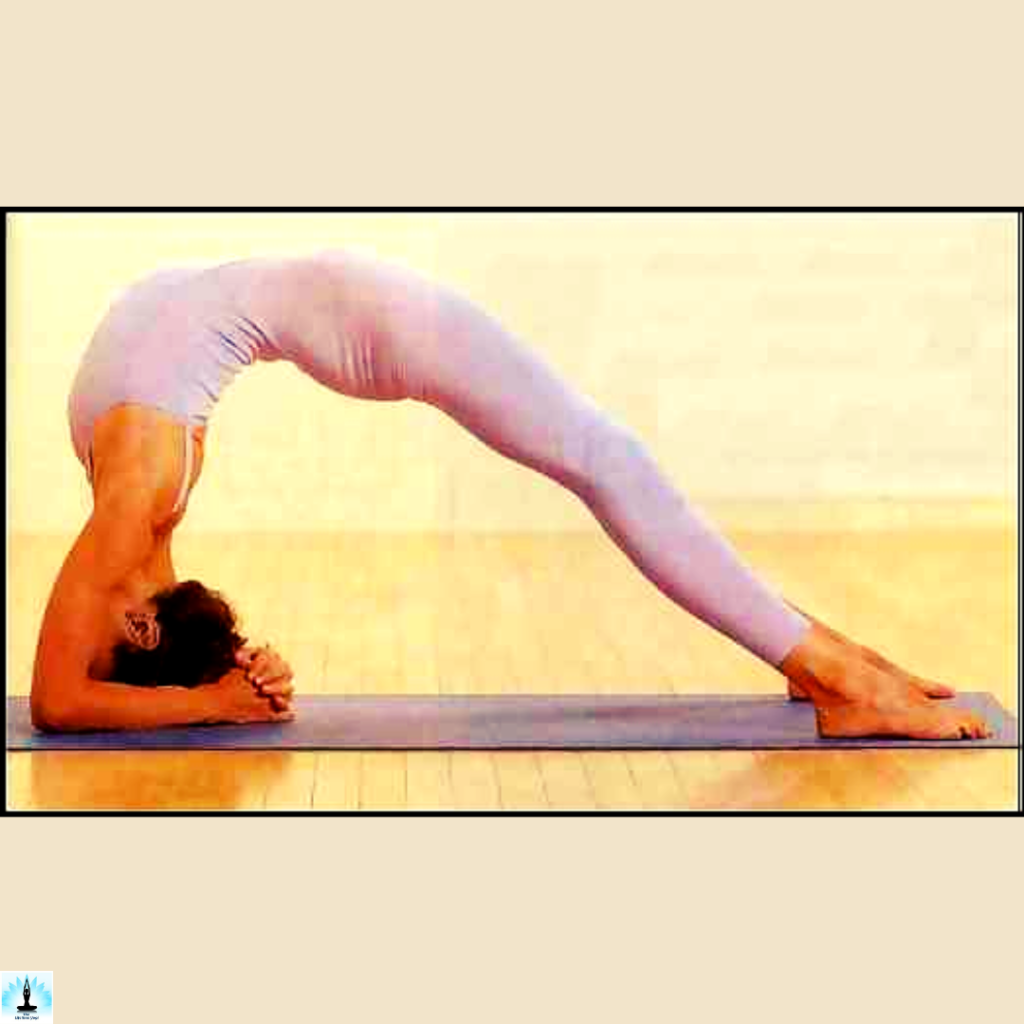
In this advanced variation, practitioners start in Ustrasana and then transition into Dwi Pada Viparita Dandasana. This involves lifting both legs off the ground while maintaining the backbend, creating a challenging and dynamic inversion. This variation demands increased strength, flexibility, and balance.
Eka Pada Ustrasana (One-Legged Camel Pose):
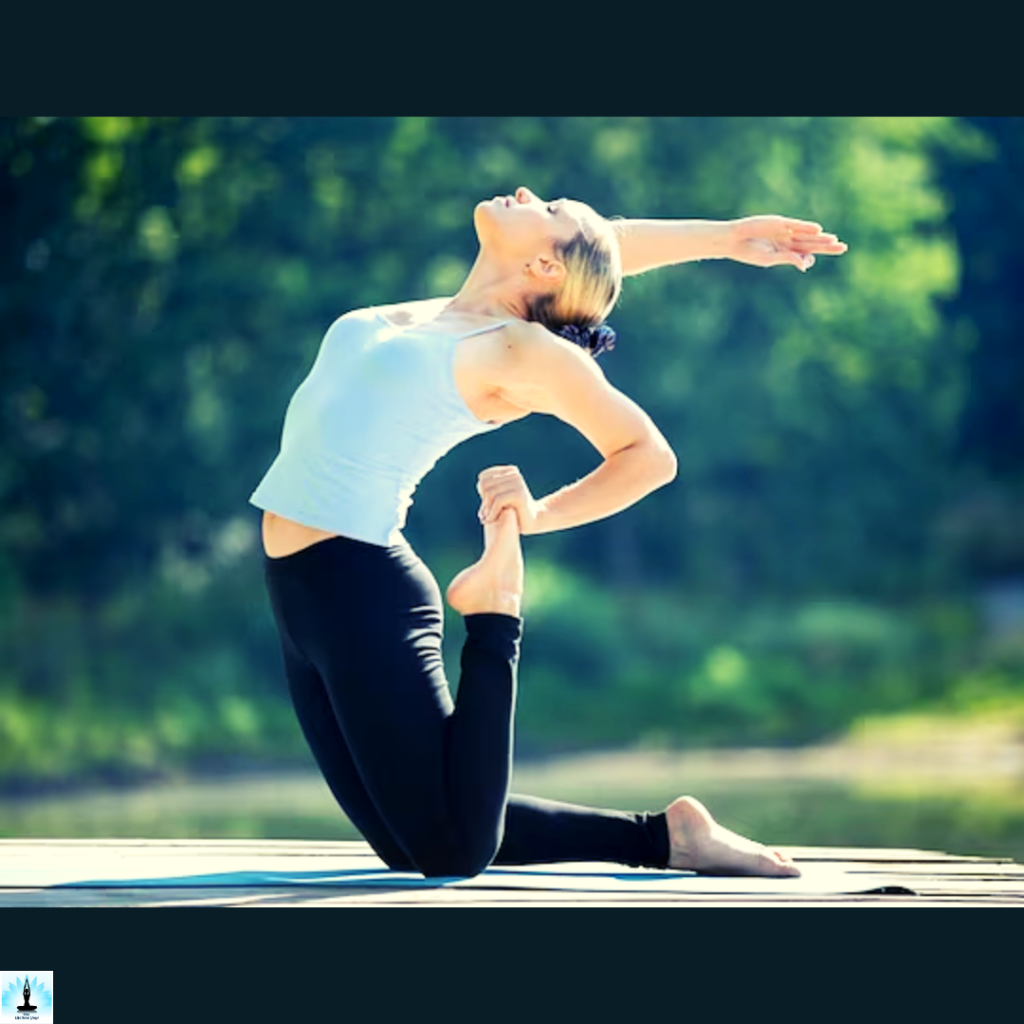
Eka Pada Ustrasana involves lifting one leg at a time while in Ustrasana, extending it straight behind you. This variation intensifies the backbend and requires a higher level of core strength and balance. It also deepens the stretch in the quadriceps and hip flexors.
Camel Pose Dropbacks:
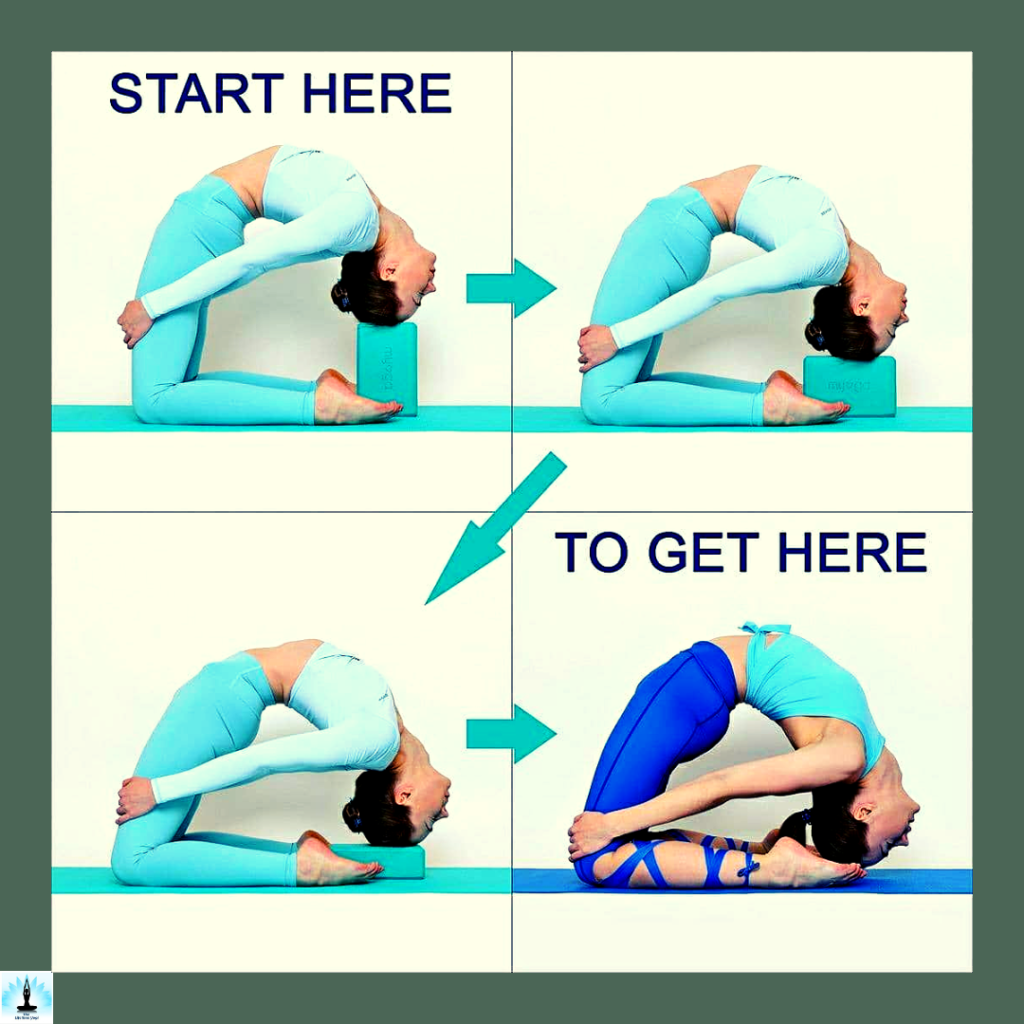
In this variation, practitioners explore dropping back from an upright position in Ustrasana into a deeper backbend, eventually reaching for the hands to touch the floor. This advanced version demands a significant degree of spinal flexibility, core strength, and careful control of the descent and ascent. Practitioners often use props or the assistance of a spotter when attempting Camel Pose dropbacks.
Therapeutic Applications of Ustrasana (Camel Pose)
Ustrasana’s heart-opening quality can be therapeutic for those dealing with emotional blockages or mild depressive symptoms, as it boosts a release of stored emotions and care for a sense of vulnerability and self-acceptance. The stretching of the abdominal region in Ustrasana also stimulates the organs, which have positive effects on digestive issues.
Poses Related to Ustrasana (Camel Pose)
Preparatory Poses of Ustrasana (Camel Pose)
Virasana (Hero Pose):
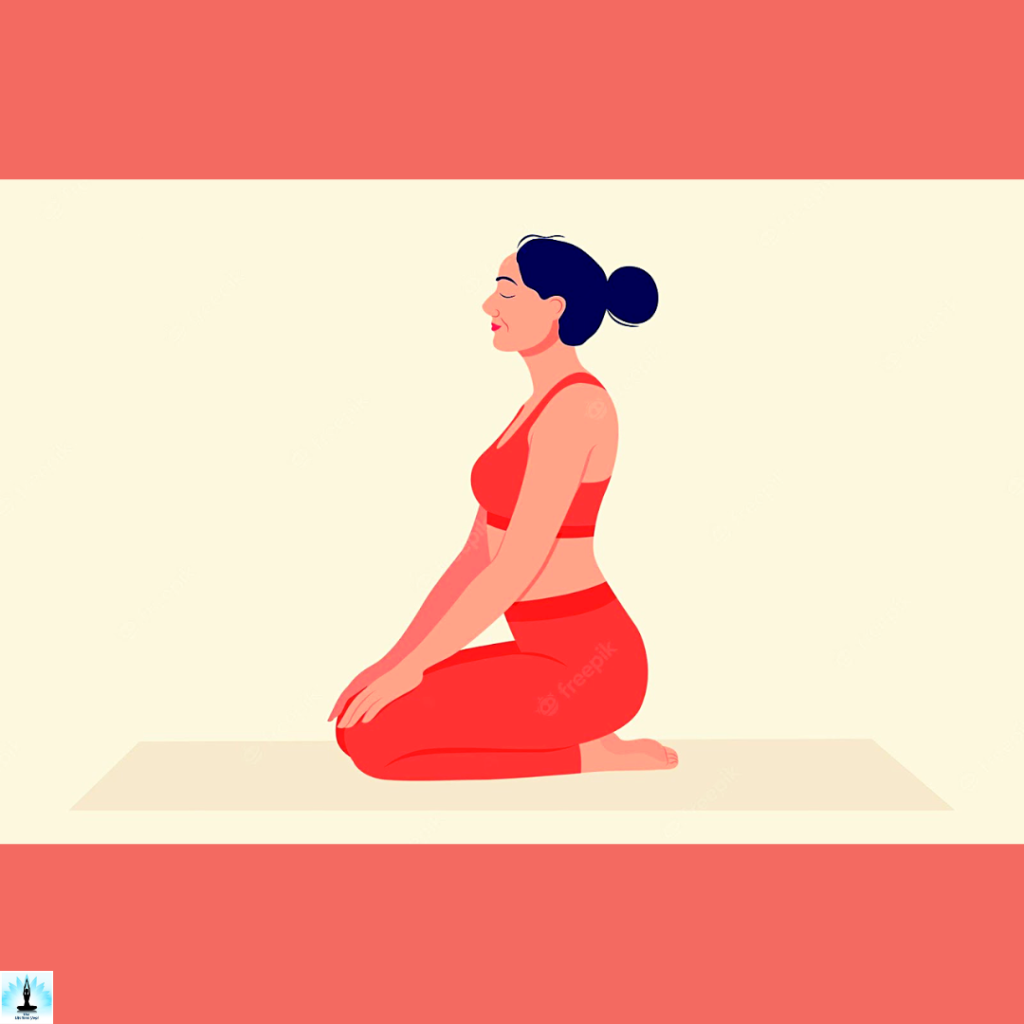
Virasana is an excellent pose to practice before Ustrasana as it helps prepare the legs, knees, and ankles. Sitting on the heels in Virasana gently stretches the thighs and ankles, making them more receptive to the deep bend involved in Ustrasana. This pose also encourages an upright and aligned posture, setting a foundation for the backbend in Ustrasana.
Bhujangasana (Cobra Pose):
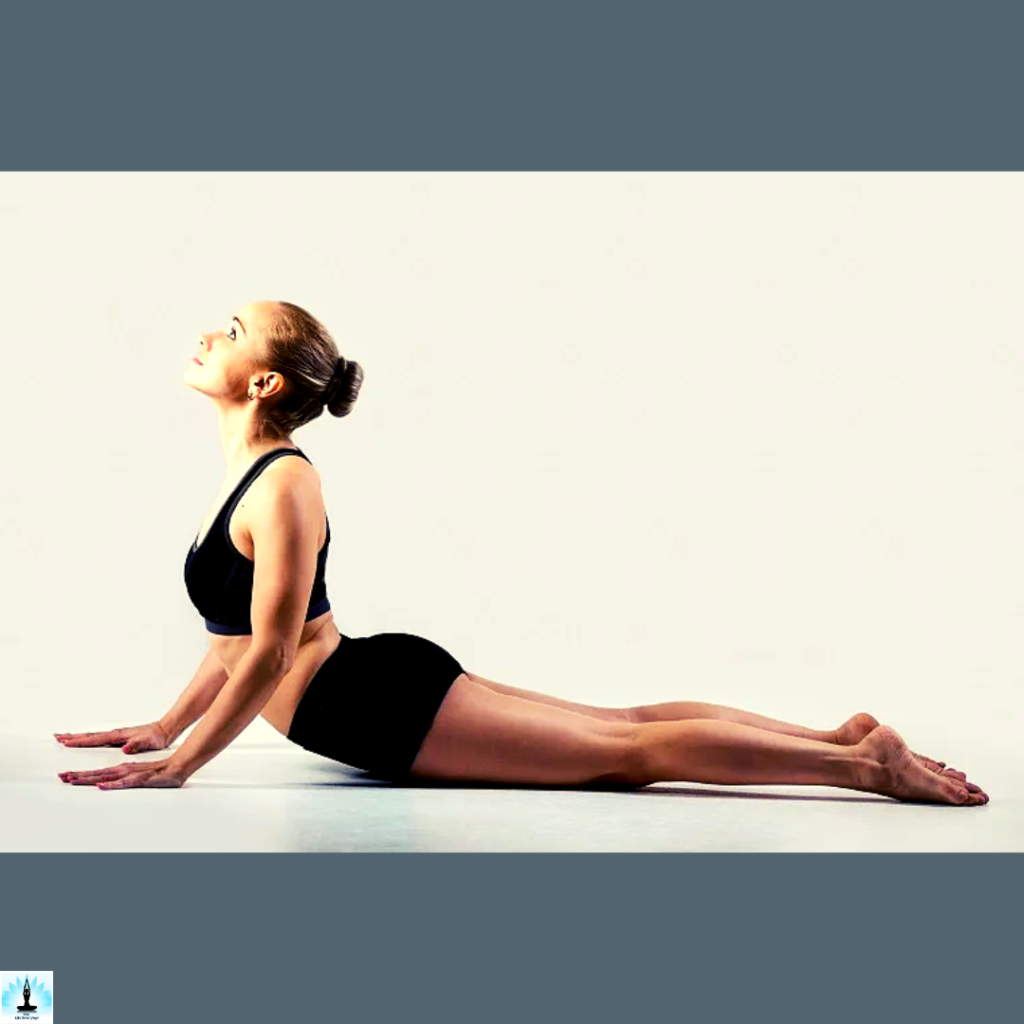
Bhujangasana is an effective preparatory pose for Ustrasana as it opens the chest and engages the back muscles. While Ustrasana is a more intense backbend, practicing Cobra Pose helps warm up and strengthen the spine, providing a gradual progression towards the deeper backbending aspect of Ustrasana. Additionally, Bhujangasana encourages proper alignment and extension in the upper body, essential for the successful execution of Ustrasana.
Follow-up Poses of Ustrasana (Camel Pose)
Balasana (Child’s Pose):
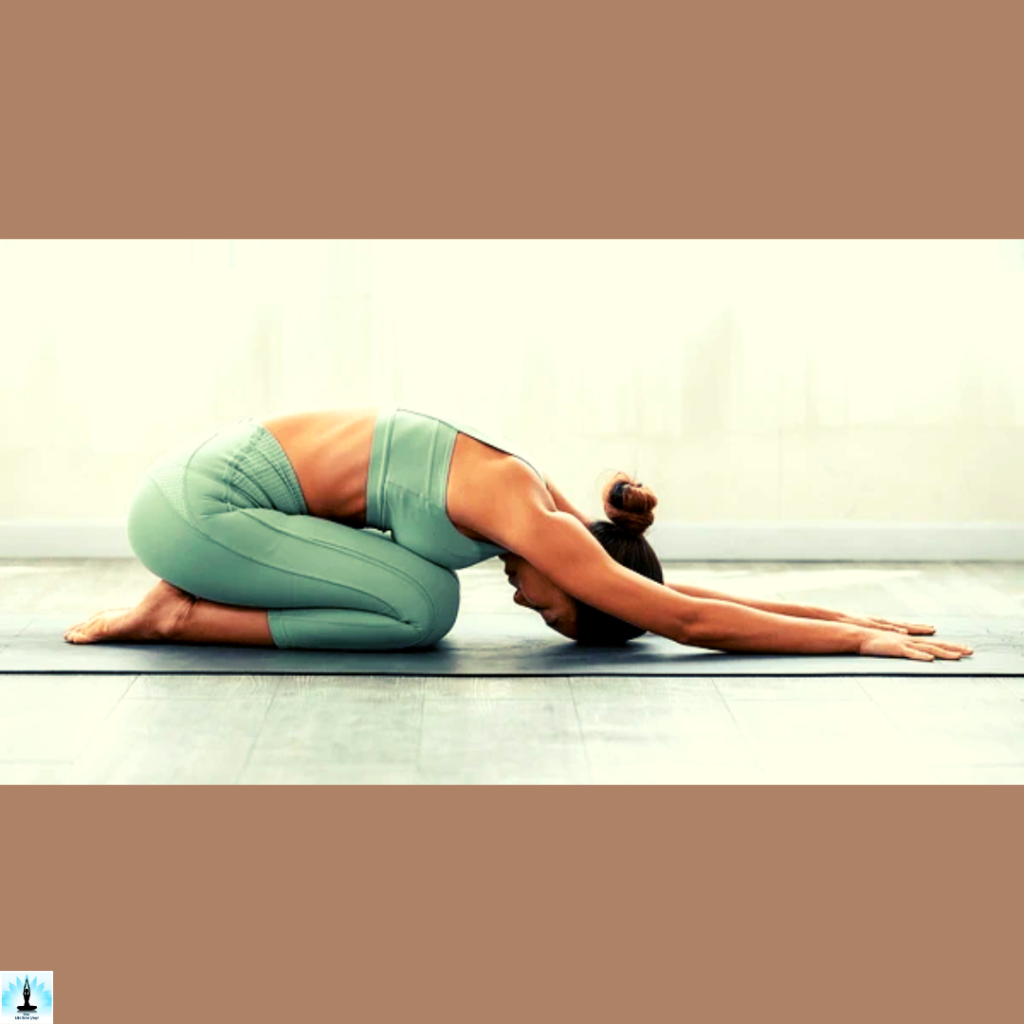
Following Ustrasana, transitioning into Balasana provides a restorative counterpose. Child’s Pose allows the spine to gently decompress, the back muscles to relax, and it promotes a sense of grounding. This posture helps balance the effects of the backbend, providing a moment of rest and recovery.
Supta Virasana (Reclining Hero Pose):
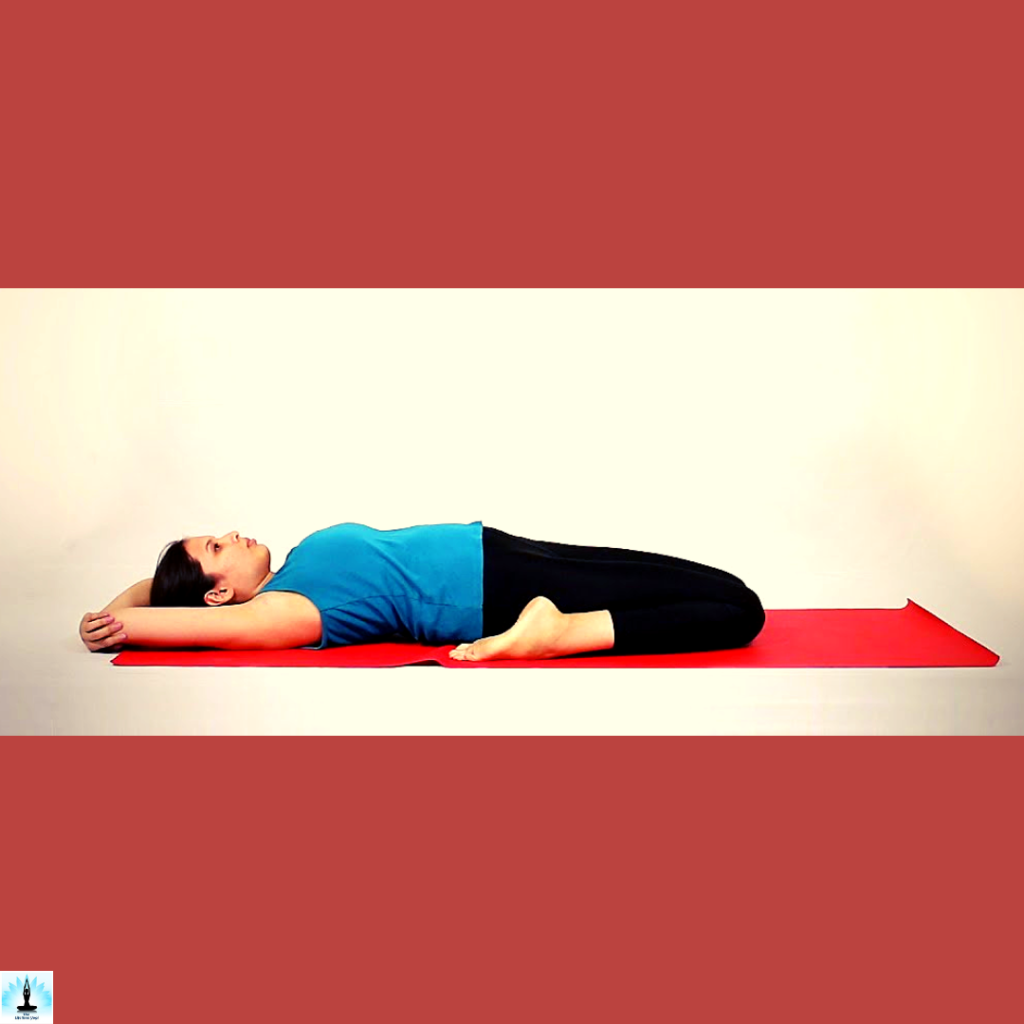
Supta Virasana is an excellent pose to practice after Ustrasana as it allows for a gradual release of the backbend and provides a gentle stretch to the thighs, knees, and ankles. Reclining in this pose supports the spine and encourages a sense of surrender, complementing the heart-opening and energizing qualities of Ustrasana.
Beginner’s Tip of Ustrasana (Camel Pose)
Begin with a proper warm-up, focusing on gentle backbends and stretches to prepare the spine and open the chest. As you enter Ustrasana, start with a shorter backbend, gradually increasing the depth as your flexibility improves. Place your hands on your lower back for support initially, allowing your body to acclimate to the stretch. Engage your core to protect the lower back, and remember that it’s more important to maintain proper alignment than to achieve a deep backbend.
Contraindications and Cautions of Ustrasana (Camel Pose)
- Individuals with serious neck or back injuries, such as herniated discs, should approach Ustrasana with caution or avoid it altogether.
- Those with high blood pressure or migraine issues may need to be mindful of the intense backbend, and modifications may be necessary.
- Pregnant women, especially in the second and third trimesters, should consult with their healthcare provider before attempting Ustrasana due to the deep backbend and compression on the abdomen.
- Individuals with knee or ankle injuries may need to modify the pose or skip it to prevent exacerbating their conditions.
FAQ’s on Ustrasana (Camel Pose)
Q: What is Ustrasana?
A: Ustrasana, or Camel Pose, is a yoga asana where practitioners arch their back, reaching for their heels with their hands. The pose involves a deep backbend, opening the chest and stretching the front of the body.
Q: Is Ustrasana Suitable for Beginners?
A: While Ustrasana can be challenging for beginners, modifications and gradual progression make it accessible. Starting with proper warm-ups, shorter holds, and using props can help beginners ease into the pose.
Q: Can Ustrasana Relieve Back Pain?
A: Ustrasana may help relieve mild back pain by strengthening the muscles along the spine. However, individuals with serious back issues should approach the pose cautiously and consult with a healthcare professional.
Q: What Are the Benefits of Ustrasana for The Spine?
A: Ustrasana strengthens the back muscles, increases flexibility in the spine, and promotes better posture. The deep backbend helps counteract the effects of prolonged sitting and rounded shoulders.
Q: Can Ustrasana Be Practiced During Pregnancy?
A: Pregnant women should approach Ustrasana with caution, especially in the second and third trimesters. Consulting with a healthcare provider is advisable, and modifications or alternative poses may be recommended.
Q: How Can Beginners Improve Flexibility for Ustrasana?
A: Beginners can enhance flexibility for Ustrasana through regular practice of gentle backbends, chest-opening poses, and hip flexor stretches. Gradual progression and consistency are key.
Q: Is Ustrasana Beneficial for Emotional Well-Being?
A: Yes, Ustrasana is believed to be beneficial for emotional well-being as the deep backbend may release stored emotions. The pose’s heart-opening quality is associated with promoting feelings of vulnerability and self-acceptance.
Q: Can Ustrasana Be Practiced with Knee Issues?
A: Individuals with knee issues should exercise caution with Ustrasana. Placing a cushion or folded mat under the knees and avoiding excessive pressure on the joints can be helpful. Consulting with a healthcare professional is advisable.
Q: How Long Should One Hold Ustrasana?
A: The duration of holding Ustrasana can vary. Beginners may start with 20-30 seconds, gradually increasing as they become more comfortable. Advanced practitioners may hold the pose for longer periods based on their practice level.
Q: Can Ustrasana Be Incorporated into A Daily Yoga Routine?
A: Yes, Ustrasana can be incorporated into a daily yoga routine, but it’s essential to practice mindfully. Consistency, proper warm-up, and listening to the body are crucial for a safe and effective practice.
Conclusion
Practitioners should approach Ustrasana with respect, especially considering individual limitations and health conditions. Consistent and mindful practice, along with attention to proper alignment, can contribute to a rewarding experience of this empowering pose, making Ustrasana a cornerstone in the journey toward holistic well-being on the yoga path.
References
- “Dhanurasana”. AshtangaYoga. Archived from the original on 29 April 2011. Retrieved 11 April 2011.
- Sinha, S. C. (June 1996). Dictionary of Philosophy. Anmol Publications. p. 18. ISBN 978-81-7041-293-9.
- Sjoman 1999, p. 77; plate 9, pose 54.
- Sjoman 1999, pp. 100–101.
- Iyengar 1979, pp. 87–88.
- Swanson, Ann (2019). Science of yoga : understand the anatomy and physiology to perfect your practice. New York, New York: DK Publishing. pp. 76–79. ISBN978-1-4654-7935-8. OCLC1030608283
